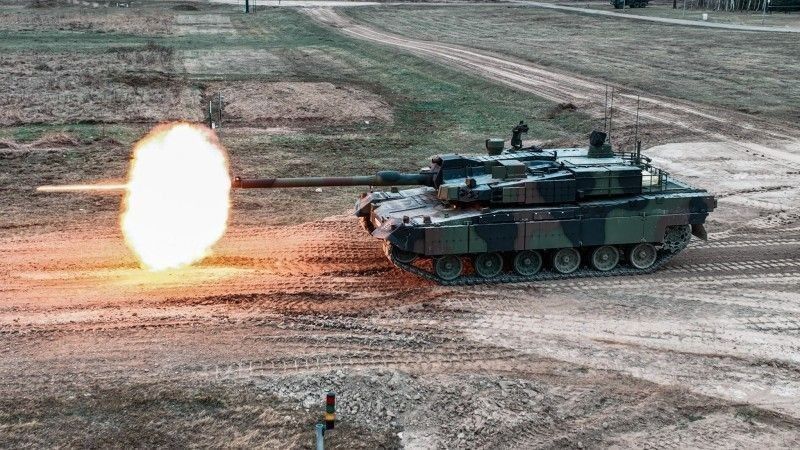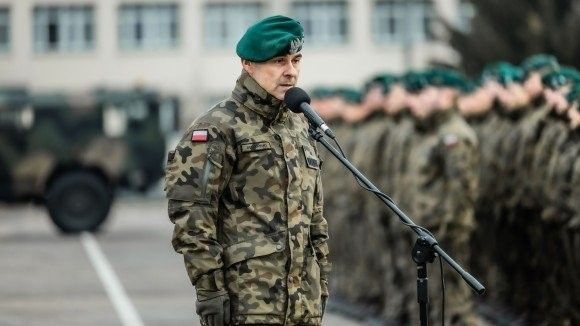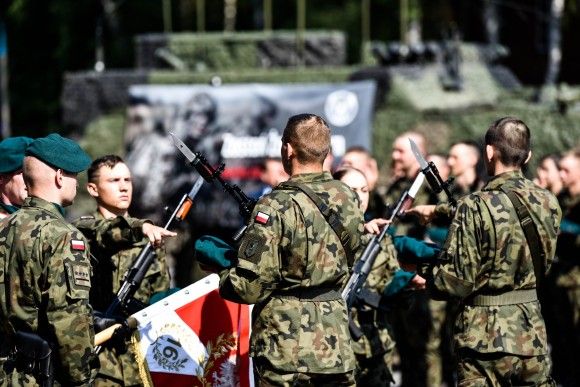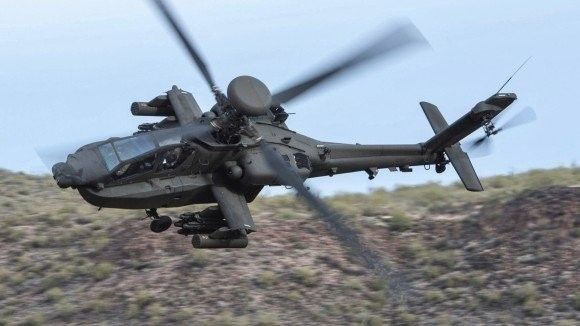Defence Policy
Biggest Division of the Polish Army with Korean Equipment. General Iwanowski: All As Per Schedules and Budget

”All elements: the professional cadre, soldiers, infrastructure, and equipment would be coordinated. Everything is put into schedules, and these also take the budget into account” - stresses Brig. General Norbert Iwanowski, commander of the 1st Legions Infantry Division. In the interview, he is mentioning the structural planning, equipment, and stationing locations for the new element of the Land Forces.
Jędrzej Graf: The 1st Division of Legions Infantry is to be the fifth element as such in the Polish Army, and the first one, formed from scratch. The decision to establish it has been made quite recently - in 2022. The publicly available estimates, including analysis conducted by Defence24.pl a few years back, establishing a division entails a major cost, of up to PLN 50-80 bn. I would like to ask - how the Division concept looks, planning-wise. Have all costs been taken into the equation?
Brig. General Norbert Iwanowski, Commander of the 1st Legions Division Infantry: The concept of forming the division is based upon 3 pillars. The first one stems from the guidelines issued by the deputy PM, and head of the Polish MoD, Mariusz Błaszczak, regarding its general structure, personnel composition, and general armament of the division. The second pillar is based directly on the experience gathered when forming the 18th Mechanized Division. The third pillar stems from the assumed integration and interoperability of the divisions at multiple levels. We are speaking of integrating the division in the structures of the Polish Armed Forces, and also of NATO interoperability, as allied and coalition structures also remain present in Poland. Finally, we want to integrate the local divisions with local communities and authorities, as it is the communities that are going to be a source of personnel.
The concept, planning-wise, takes into account the stages within which the division would be formed, when it comes to the establishment of barracks and other infrastructure, the expansion of human resources, and primary military equipment throughout the division's lifecycle, also, when it comes to estimated costs. I would like to add that the concept has been an innovative one. The concept consists of two parts, general one, which should remain unchanged, and thematic supplements that include detailed data on forming of the division, including the organizational structure, deployment of the elements, times needed to gain readiness, equipment types, and key inventory, or the recruitment and training processes. That creates a lot of flexibility, as changes can be introduced as the situation evolves, without changing the key assumptions.
The process throughout which the capabilities are achieved by the individual elements of the division is coordinated with the key determiner, namely the establishment of the infrastructure, where initially it is assumed that containerized replacement infrastructure is used, and the provisions of the Armed Forces Development programme, and the performance plans, including the Technical Modernization Plan, defining the equipment delivery deadlines. All elements: the professional cadre, the soldiers, the infrastructure, and the equipment would be coordinated. Everything is put into schedules, and these also take the budget into account.

Some voices suggest that the existing divisions also need reinforcement - primarily the 16th and the 18th, as they are still not fully equipped. Why the 1st Division is being formed now, and how this element is going to look like?
The 1st Legions Division Infantry is to reinforce the defensive capabilities in the eastern part of our country. It would be stationed within the space between the 16th and 18th Divisions, with capabilities designed to effectively deter and push away any armed aggression. Furthermore, that division would be characterized by resilience towards threats, and adaptive profile - to meet new challenges and circumstances. Currently, we are facing a changed, and complex security situation in our region. The Russian Federation is a threat to NATO, that has been officially said by NATO. All analytical efforts undertaken indicate that Russia may continue pushing its aggressive policy targeting its neighbours, while the threats generated by Moscow may become standing, which means that owning countermeasures would be necessary.

Photo. Uralvagonzavod
It is also very important to have relevant potential at one's disposal, close to the threatened area. Putting it bluntly: to have forces on site, and have relevant support measures at safe locations. Not only the ongoing war in Ukraine, but also other conflicts, show that time and conditions are not always favorable to conduct efficient maneuvers at long distances, and conducting training and operations in a known area, better conditions are met when it comes to rapid force projection and heightened resilience to threats.
Poland has more than 200 kilometers of northern border with Russia, and more than 400 kilometers of border with Belarus, militarily integrated with Russia. A need emerged to reinforce the eastern flank, with another tactical-level unit. We remember that in the era of hybrid threats, we shall be ready to face any scenario. This is also the reasoning and philosophy behind the stationing of the Division elements.
Should a new division be formed, even when the current divisions are not fully formed now?
Some processes can and should be taking place in parallel. We need to remember that forming a new Division, the 1st Infantry Legions Division in this case, would last at least a few years until it becomes operationally capable. The 16th and 18th Mechanized Divisions are expanding their combat potential and structures of theirs as well - modern combat assets and trained cadre are becoming a part of the unit here. Meanwhile, both these tactical elements are fully operational. Their extra capabilities may be expanded in parallel with forming a new division.
At the same time, we need to create foundations for general and specialized military elements within the 1st Legions Division Infantry, if we want to obtain results in the timeframe assumed and contribute to establishing security in the eastern part of Poland. Currently, we are forming reconnaissance, engineering, chemical, and command elements. In a few weeks, we would launch a recruitment campaign for the motorized, and armored units.
The preparation of the cadre and the establishment of structures alone takes some time. For instance, if we assume that a specific element receives equipment in 1.5 years, we need to create structures and train the cadre right now, to make everything ready for the takeover of the said assets according to the adopted timeline. Thus, we cannot wait any longer.

Photo. Zespół reporterki 16. DZ
And what the structure of the 1st Division of Legions Infantry is going to be?
Ultimately, the 1st Division of Legions Infantry would be the largest tactical-level unit in the Polish Armed Forces. I expect it to consist of 12 units, including 4 brigades, an artillery brigade, four service branch regiments, and three specialist battalions. The exact structural expansion plans remain confidential, but I can say that a division is to include 30 thousand troops in total, along with more than 1,000 general combat equipment assets.
The Division would include a motorized brigade, and an armoured brigade within its structures, which would be formed in the first stage, and two mechanized brigades, established during stage 2. Let me add that the general brigades would consist of four battalions, and they will be reinforced by extra support units. Meanwhile, an artillery brigade, apart from typical howitzer and rocket artillery elements, would also operate a strike squadron, based around the Gladius system.
How cadre is going to be provided, for the new unit? It is not a secret that individual units of the Polish Army face numerous challenges, especially when it comes to specialist training.
Before launching the concept of forming a division, we carried out a detailed assessment of the geographical-operational environment of the future area where the division would be stationed, with particular attention paid to the socio-economic conditions. The division units would be deployed in four Voivodeships: Masovian, Warmia-Masurian, Kuyavian-Pomeranian, and Podlachian. 2.8 million citizens live there, including 1.2 million (42%) at an age potentially available for military service - from 18 to 50 years old, at a recruitment and mobilization age. Out of that number, 40 thousand remain unemployed. We have a pool of people who could be potentially interested in engaging in a variety of forms of military service.
During the analytical effort, we were also taking into account the employment structure, remuneration and sector-wise (commerce, industry, agriculture, services), accessibility to the infrastructure: road networks, family infrastructure, such as kindergartens, nurseries, schools, or healthcare facilities. We want the soldiers to be able to live and have their families with them at locations where the military units are stationed, or nearby, so that the spouses can also enjoy professional development opportunities. The conclusions gathered show that in the area that would host the division, military service remains competitive and attractive, as opposed to other offers on the local job market.
The recruitment for the division units would include baseline cadre - volunteer officers and NCOs, including baseline NCO course graduates from other units, that would form the core, and act as the experienced personnel, who remain highly qualified and professional. I do hope to find potential leaders among them, who would remain responsible for training, and getting the training levels in sync, which is necessary at all elements, especially the newly formed ones. Furthermore, the Division staff would be complemented by the graduates of military academia and passive and active reserve soldiers. The key privates would come from the Voluntary General Military Service pool - throughout the first months of specialist training they may transition to professional military service.
Reflecting on the experience gathered when the Territorial Defence Forces were formed in the areas that would host the divisions, I can say for sure, we will not run out of volunteers. The interest in military service remains high, and local patriotism is also quite important, along with the "Zostań Żołnierzem Rzeczpospolitej" (Become a Soldier of the Republic of Poland), or "Trenuj jak Żołnierz" (Train Like a Soldier) initiatives, military picnics, and job fairs.
What is the inventory that the new Division would receive? Would it be more like the 16th, or like the 18th Division, equipment-wise?
First, no Post-Soviet equipment will be used in the 1st Division of Legions Infantry. This is one of the key assumptions adopted by the Deputy PM and Head of the Polish MoD, Mariusz Błaszczak. We are headed towards equipping the division with Korean vehicles, but we also need to remain flexible, to adopt armament provided by domestic industry - alternatively.
The area where the division would be deployed in less than friendly for the heavy MBTs. Thus, to ensure proper power projection and peacetime deterrence/wartime resilience, we need to have freedom of maneuver and movement. Thus, we are headed towards the K2 main battle tanks.
The Division's artillery element would also be expansive. Apart from the tube artillery squadrons with the K9 howitzers, the unit will also operate rocket artillery squadrons with the K239 Chunmoo launchers. When it comes to the IFVs, a heavy IFV is planned to be procured for the Division's structures. As I said, we also need to be ready for alternatively taking over assets provided by the domestic industry, such as the Krab howitzer, or the Borsuk IFV. The timeline along which the division will be formed makes everything flexible when it comes to the implementation of the inventory that would be available for the Division.
Are the Ottokar-Brzoza tank destroyers a part of the plan here?
These capabilities would first be introduced in the anti-tank unit that ultimately would be a part of the 16th Mechanized Division. I would like to stress, however, that the use of modern, new-generation ATGMs, such as Spike or Javelin, also portable ones, and ones on mobile platforms, is a key element of the process, especially for some specific areas, including lakes and forests. Also, the terrain leads us towards channeling of the movement of fighting platforms. The maneuvering will be challenging and this allows us to lethally employ anti-tank ambushes.
As the commander of the 15th "Giżycka" Mechanized Brigade, I could have used anti-armour ambushing tactics successfully, using the portable ATGM systems I had in my inventory. Noteworthy, the terrain present in Mazury and Podlasie features no clear borders, or reference points, allowing for a clear definition of the areas of responsibility. The commanding officers of those units need to be ready for autonomously undertaking relevant operations, within task groups in specific areas, with the main objective of neutralizing the aggressor to the maximum extent, to diminish his advantage and significantly reduce his combat potential. Preparing the anti-tank defence is key here.
Furthermore, in the future, the use of robotized and unmanned systems shall lead to a further increase in the autonomy of the element commanders.
What features of the Division structure, and of the individual elements, remain key here?
First and foremost, reconnaissance and communications in the C2 domain are a priority. Without the "eyes" and the "nerves", one cannot remain lethal in combat. Fire, as an effector, is spectacular - it always attracts most of the attention. The lethality is determined by several factors, such as the aforesaid multi-sensor manned, and unmanned reconnaissance assets that allow one to obtain a holistic situational picture, and situational awareness, with a high degree of the net-centric operational profile.
Secondly, the flexible profile of the formed structures is also fairly important. These have been designed in a manner allowing for the ad-hoc creation of task forces. This is also aligned with the conclusions drawn from the war in Ukraine, as they are showing us that we need to depart from the in-the-box thinking sometimes. I will be able to create mobile task groups supported by artillery and A2AD systems, partaking in layered IADS with the SHORAD systems: Little Narew, Narew; and VSHORAD assets: Poprad or Piorun.

Photo. Mesko S.A.
A lot of emphasis would be placed on mobility and countermobility of the engineering elements within the Division. The Division, as the sole unit in the Polish Army, will have a CRBN battalion of its own, providing support for the military elements, and the uniformed services as well.
You have mentioned air defences. Is the army aviation component - helicopters - also considered here? Solutions as such are employed by other nations at the tactical level.
Certainly, the helicopter capabilities, especially the strike capabilities, are very much needed by the division commander. However, no plans are in place to place these directly in the 1st Legions' Infantry Division. Nonetheless, there is no doubt that the given commander, depending on the adopted combat concept, will have a determined air support effort at his disposal.
The "Close Combat Attack" capabilities are one of the key assets handled by the commander, allowing for rapid response and lethal action, retaining the cohesion and resilience of the fighting elements. Of course, several criteria need to be met, for such armament to be used freely - such as the safe airspace in the mission area, and ensuring resilience to the enemy assets or EW measures.

The helicopters remain relatively less-than-effective in Ukraine. The public sphere sometimes includes concerns, suggesting that as the air defences are broadly proliferated, the role of helicopters is diminished.
I reject this view. One cannot, based on experiences gathered during a single conflict, with the sides using assets of a specific technological level, in specific areas, draw unified conclusions on the use of the given type of combat platform.
As I said, the attack helicopters need to be supported by other fighting systems, such as EW assets, or Integrated Air Defence Systems. The lethality of the helicopters, and other fighting assets, would depend on numerous conditions: time of the day, the employed tactics, cooperation with other assets, including UAVs, skills, and the level of technology in the used solutions.
From my point of view, the support ensured by Army Aviation remains crucial for the Division's operations on the battlefield. The Army Aviation assets may allow us to face a surprise strike - that cannot be ruled out. It also provides us with MEDEVAC and quick transport capabilities. And these remain indispensable. Both the tactics and the technology will evolve, so we need to continuously develop the capabilities at hand. We need to develop the capabilities continuously, but this applies to any branch of the military, especially when war is raging on our doorstep, in Ukraine.
You have mentioned the command role in the 15th "Giżycka" Mechanized Brigade, one of the largest brigades in the Polish military, integrated with allied elements. I would like to ask, summing our interview up - how these experiences can be aligned with the planning and forming, and commanding, at a Division level?
During my time as the commander of the 15th "Giźycka" Mechanized Brigade, I was taking part in several exercises, also outside the Orzysz range. These exercises have a very specific nature. We have been deploying equipment, including Leopard, or Abrams MBTs, using the public roads for mobility and getting ready for a variety of scenarios. Contrary to what may seem, this has been a valuable experience, highlighting the role of the terrain and its specifics. There are numerous winding and narrow roads in the Mazury district, yet we've been able to maneuver around, with normal traffic!

The 1st Division's station has been selected in a manner allowing the unit to execute its primary tasks - deterrence, force projection, and to act as a barrier, also during peacetime. This is tied to the proper arrangement of the individual units, the command, and the support and backline elements, which should all be resilient to direct action undertaken by the adversaries, and retain the relevant combat capability, taking the mission objectives into account. Adaptation to the new environment, forced by maneuver, is also important here.
Furthermore, I will be placing a lot of emphasis on getting the leadership ready and strong, giving them high levels of morale and an efficient C4ISR system. And it is key to work with the neighbors - the 16th and 18th Divisions, towards a common goal - our integration into the defensive system for the northeastern part of the country.
Thank you for this conversation.
